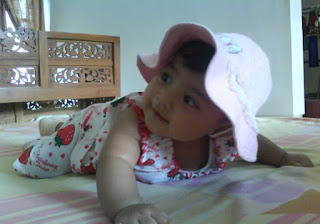There
is almost nothing more frightening for newborns sudden death syndrome
syndrome or SIDS parents of the infant: the idea that you can make a
perfectly healthy baby to sleep, only to discover that he or she died one hour later, it is indescribable terrible.
I lost two patients for SIDS, and in fact was horrible beyond description.
There are some simple rules that can help parents keep their children safe - and yet many parents do not follow. In a recent study, more than half of parents surveyed were not following three recommendations. How is this possible?
The first part of the problem, I think, is that SIDS is confusing - not only for parents but also doctors. Not all babies die in their sleep die for the same reason; Several factors and different causes. That's why we use it a term that is less known: sudden unexplained death of an infant or SUID. Some
of these babies die because they stopped breathing (in some cases
because their brains do not respond to normal signals to change position
or breathe), and some of these babies die of suffocation or
strangulation bedding - or because someone shot at them during sleep. We do not always see the difference once the child died. Because there are many causes, we have several different recommendations - and confusing for parents.
The
other part of the problem is that some of the recommendations seem to
go against one of the requirements or common dream customs above - and
some of them may be difficult for some families and some babies. Since SUID is rare - it happens only about 100 of the 100,000 babies
born in the US - Some families feel it is OK to do what Grandma says or
what is easier, rather than follow the doctor's instructions.
These are the main recommendations - and why some families do not follow.
Always place your baby on his back to sleep
The
recommendation "Back to Sleep", established in 1994, has had a major
impact on the incidence of SUID / SIDS. Sleeping on your back helps in
two ways. First, it becomes less likely that the baby will suffocate on
bedding. Second, we know that for some babies, the problem is that
their brains do not realize that when they begin to choke, should turn
his head or body and breathing. Not that they can not turn the head or turn around; it is that they do not.
This
recommendation seems simple, but I have talked with many families
struggling with him because their babies startle awake when they are in
the back. In the womb, which curl up and sleep. The best advice I can give to these families is: keep trying. Over time (which may include some sleepless nights), most babies can learn to sleep on their backs.
I also met with families who take care of the child can spit at night and drown in if they are in the back. This is actually the reason why the position of the belly has been recommended for many years. But it turns out this is very rare. Some babies have medical conditions that require sleeping on the stomach, but parents should do if the doctor advises.
Do not put your baby to bed with you
The
safest place for a baby to sleep in the parents' room - so they can be
aware of the needs of the baby - but in their own dream space, like a
cradle (with a firm mattress - soft can lead suffocation). Many
co-sleeping families are not only reassuring, but practice, since so
many babies love to be with a parent who sleep better that way. Again, my advice is to keep trying. Safety is always more important than comfort.
Keep the bed naked
This
means no crib bumpers without pillows or stuffed animals, and - which
is more difficult for parents - no blankets (which means without layers,
as it involves a blanket). To reduce the baby choking hazard should be the only thing in the cradle. If it's cold, sleep coverage may do the trick. As beautiful soft blankets can feel children and older adults, not worth the risk to infants. And warming could increase the risk of SIDS, too.
Consider using a pacifier
We do not know exactly why, but pacifier use lowers the risk of SIDS. You can keep them in another, safer level of sleep. Some parents worry about the use of pacifiers; They believe that it can interfere with breastfeeding or later lead to dental problems. But
most babies who use pacifiers are not breastfeeding problems
(especially lollipops do not produce milk), and there is plenty of time
to get rid of the pacifier before it causes problems with teeth.
No smoking
The cigarette smoke exposure before and after birth increases the risk of SIDS. Not good for the smoker, either. But for some parents, quitting can be very difficult. For assistance, call 1-800-QUIT NOW or visit www.women.smokefree.gov.
Parents should talk to their doctor if they have questions or if you experience problems with the recommendations. We're here to help. Like you, we want to keep your baby safe - and alive.
By: Claire McCarthy, MD
10/15/2015
Home »
Child health.
,
Child Protection
,
Healthy baby
,
Healthy living
,
Healthy women.
,
News Children
» Why some parents do not follow the recommendations "of safe sleep" for babies













0 komentar:
Post a Comment
"Thank you for visiting my blog, please leave a comment in the space provided."